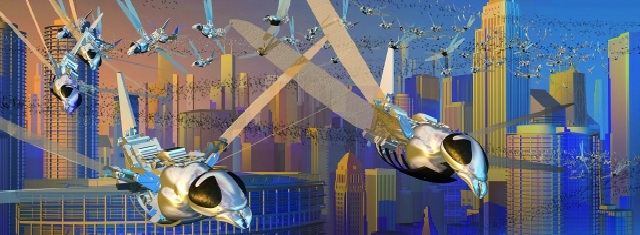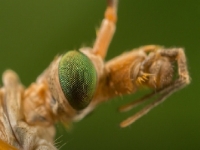Technology
UNIQUE APPROACH TO THE DESIGN OF A CURVED ARTIFICIAL COMPOUND EYE
CONSISTING OF MOSAIC TINY OPTICAL UNITS

(Source: EPFL)
USPA NEWS -
Insect compound eyes consist of a mosaic of tiny units. Compared with vertebrate single-lens eyes, compound eyes offer a versatile morphology with panoramic field of view, negligible distortion and aberration, and high temporal resolution, while trading high spatial resolution for diminutive size.
According to the publication of the Laboratory of Intelligent Systems, Ecole Polytechnique Fédérale de Lausanne, such curved visual sensors may be useful for terrestrial and aerial vehicles, medical instuments, prosthetic devices, home automation, surveillance, motion capture systems, and smart clothing.
In most anima species, vision is mediated by compound eyes, which offer lower resolution than vertebrate single-lens eyes, but significantly larger fields of view with negligible distortion and spherical aberration, as well as high temporal resolution in a tiny package.
In most anima species, vision is mediated by compound eyes, which offer lower resolution than vertebrate single-lens eyes, but significantly larger fields of view with negligible distortion and spherical aberration, as well as high temporal resolution in a tiny package.
This design method opens up additional vistas for a broad range of applications in which wide field motion detection is a premium, such as collision-free navigation of terrestrial and aerospace vehicules, and for the experimental testing of insect vision theories.
The features are particulary beneficial for visually controlled navigation, including tasks like collision avoidance, take-off, landing, and other optomotor responses that do not require a high density of photoreceptors.
Ecole Polytechnique Fédérale de Lausanne
The features are particulary beneficial for visually controlled navigation, including tasks like collision avoidance, take-off, landing, and other optomotor responses that do not require a high density of photoreceptors.
Ecole Polytechnique Fédérale de Lausanne
Ruby Bird Insect Eye Technology Drone Researchers Design Switzerland Visual Intelligent System Interface Scientist Journal Article Ecole Polytechnique Lausanne Epfl Artificial Miniature
Liability for this article lies with the author, who also holds the copyright. Editorial content from USPA may be quoted on other websites as long as the quote comprises no more than 5% of the entire text, is marked as such and the source is named (via hyperlink).






